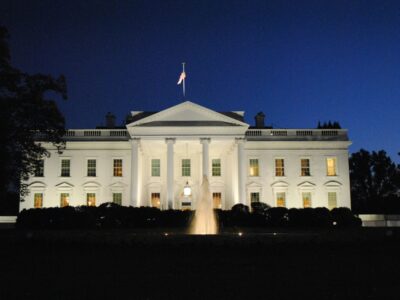Risk, Uncertainty, and COVID-19
What do we actually know at this point about the dangers?
Like many environmental hazards such as toxic chemicals, the coronavirus is fundamentally a problem in risk management. And like issues such as climate change, the problem involves scientific data, modeling, and a good deal of uncertainty.
With climate change, the key parameter is climate sensitivity. For diseases the key parameter is called R0, which measures how contagious the disease is. The most recent estimate of the R0 for the coronavirus is 2.3. [2021 update: new variants may have R0 of upt to 3.0] That means that a sick patient can infect two others and maybe (a third of the time) three others. This estimate is based on evidence from the Diamond Princess cruise ship and is consistent with other estimates. If that number holds up, it means that the virus is quite contagious, though not as much as some diseases like measles.
The 1918 flu pandemic is one point of comparison. Estimates of the R0 rate for the 1918 flu epidemic range from 1.47 to 2.27. According to the CDC, the fatality rate from that pandemic is estimated as 2.3% or more. those numbers are roughly comparable to what we know at this point about the coronavirus. The CDC estimates that about 700,000 deaths occurred in the U.S. due to the 1918 flu epidemic. [There’s more here on the 1918 flu , other flu pandemics, and the coronavirus.] If you correct for today’s larger population, which is three times bigger, that would give an estimate of 2.1 million deaths. Although that’s still not nearly as bad as medieval plagues, it’s a figure that should make us take this outbreak very seriously. Before you panic, however, keep reading.
That estimate of two million deaths assumes all else is equal. But of course, many things are different. Medical care is much different, and hopefully we can do a better job of slowing the virus’s spread. The estimate of a 2% mortality rate could well be too high, since minor cases of the coronavirus haven’t necessarily been tracked well. A study published on Friday suggests a 1.4% mortality rate. And some estimates of the mortality rate for the 1918 flu are higher than 2%. So the coronavirus may well be less deadly than the 1918 flu.
Moreover, although the CDC projects community spread, that doesn’t mean that every community will be affected by the coronavirus. If we can slow it down for a year or so, there’s a good chance of developing a vaccine.
There’s still a lot we don’t know about the 1918 epidemic even a century later. For one thing, we don’t know why it suddenly ended. There’s even more we don’t know about the current epidemic. Modeling is difficult because we’re still not totally sure of the R0 value, whether the disease is contagious before symptoms appear, or how long the latency period is. Moreover, the R0 value doesn’t take into account patterns in human interaction, like how many people an infected person has contact with or how many of those were already infected. And finally, viruses mutate, so this one could end up being either more or less dangerous than it is currently. Overall, the comparison with the 1918 flu should probably be considered something akin to a worst case scenario. But it’s still a possibility.
A more optimistic scenario is that the virus is only 10% as bad as the 1918 flu, or 200,000 deaths. That’s still several times the average year’s flu deaths in the U.S. (In 2017-2018, a particularly bad year, flu killed 80,000 people.) Definitely serious, but not something to panic about.
[March 10 update: This estimate of 200,000 turns out to be a bit low. A Lancet article estimates that 60% of the population will be infected absent strenuous mitigation efforts, with a fatality rate of 0.3-1.0%. If you optimistically assume the low-end fatality rate, this comes out to about 600,000 people. That assumes, however, that we do not make stringent efforts to control the disease.]
Perhaps we’ll do better than that, if we’re lucky. I’m not counting on Virus Czar Pence to handle the problem, but maybe Mother Nature will cut us a break. And despite the inept leadership team appointed by Trump, there are still many capable people lower in the government.
The bottom line: Even the experts can’t tell us how bad this could turn out to be. It may depend a lot on what kind of response the government mounts, as well as the scientific unknowns. The usual advice applies: hope for the best but prepare for the worst. Oh, and don’t forget to wash your hands.
Reader Comments
One Reply to “Risk, Uncertainty, and COVID-19”
Comments are closed.







“… but maybe Mother Nature will cut us a break.”
We seem to be relying more and more upon Nature bestowing upon us good fortune. That’s not really a good plan.
My favorite pertinent observation is this paraphrase of something (fellow) statistician Howard Wainer wrote [1]: “… opposing that most natural of human tendencies: the triumph of hope over evidence.”
This is a kind of mantra for data scientists and statisticians particularly in industry. The employer and your boss always wants good news and having to spend less to get good results. By insisting upon proper methods data scientists are both overworked and tend to be unpopular.
—
[1] This is a quote from Howard Wainer, in an article which appeared in CHANCE magazine, a publication of the American Statistical Association. The article was entitled “Defeating Deception: Escaping the Shackles of Truthiness by Learning to Think like a Data Scientist“, 29(1), 2016, 61-64.